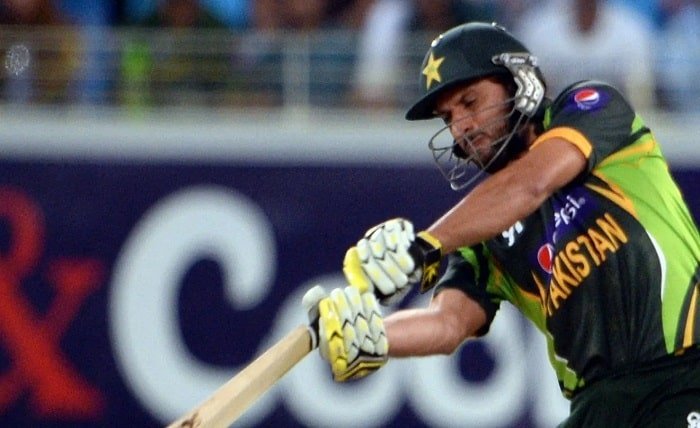The Longest Six in Cricket: An Exploration of Power and Skill

Introduction
Cricket, often dubbed the “gentleman’s game,” is as much about precision and skill as it is about power and spectacle. Among the various ways players showcase their prowess, hitting a six stands out as the ultimate exhibition of dominance and finesse. But there’s a particular fascination with the longest sixes in cricket – those extraordinary hits that send the ball soaring into the stratosphere. This blog delves into the history, legends, and jaw-dropping feats associated with the longest sixes in cricket, highlighting the players, techniques, and moments that have left an indelible mark on the sport.
The Allure of the Six
Hitting a six is one of the most exhilarating aspects of cricket, both for players and fans. It represents a perfect blend of timing, power, and precision. A well-timed six not only boosts the team’s score but also intimidates the opposition and electrifies the crowd. The longest sixes, in particular, are celebrated as moments of sheer brilliance and are often replayed in cricketing lore.
Historical Context: Evolution of Power Hitting
Early Days of Cricket
In the early days of cricket, the game’s focus was more on technique and endurance rather than sheer power. The equipment, including bats and balls, was rudimentary, and the playing conditions were vastly different. Boundaries were often undefined, and scoring a six was a rare feat.
The Rise of Limited-Overs Cricket
The advent of limited-overs cricket, particularly One Day Internationals (ODIs) and later T20s, revolutionized the approach to batting. The emphasis shifted towards aggressive batting and maximizing runs within limited overs. This change brought power hitters to the forefront, and hitting sixes became an essential skill.
Legendary Longest Sixes in Cricket History
Shahid Afridi’s Colossal Six
One of the most iconic sixes in cricket history was hit by Pakistan’s Shahid Afridi. In 2013, Afridi launched a ball out of the stadium during an ODI against South Africa, estimated to have traveled 153 meters. This monumental hit remains one of the longest ever recorded and solidified Afridi’s reputation as a formidable power hitter.
Brett Lee’s Unexpected Feat
Australian fast bowler Brett Lee is better known for his blistering pace than his batting. However, in a surprising turn of events, Lee hit a remarkable six during a Test match against the West Indies in 2005. The ball sailed out of the stadium, covering an estimated distance of 143 meters, showcasing Lee’s hidden power.
MS Dhoni’s Towering Six
Indian cricket legend MS Dhoni is renowned for his finishing prowess and powerful hitting. In 2009, during an ODI against New Zealand, Dhoni smashed a massive six that cleared the stadium roof, estimated to have traveled 112 meters. This shot exemplified Dhoni’s ability to combine strength and technique to produce spectacular results.
Chris Gayle’s Unmatched Power
When it comes to hitting long sixes, few can rival West Indian cricketer Chris Gayle. Known as the “Universe Boss,” Gayle has consistently demonstrated his ability to clear the boundary by considerable margins. One of his longest sixes, hit during the 2013 IPL, traveled approximately 119 meters, further cementing his status as one of the most powerful hitters in the game.
The Science Behind Hitting Long Sixes
Physical Strength and Fitness
Power hitting in cricket requires exceptional physical strength and fitness. Players often engage in rigorous training regimes to build muscle and enhance their core strength. Exercises focusing on the upper body, particularly the shoulders, arms, and torso, are crucial for generating the power needed to hit long sixes.
Technique and Timing
While physical strength is important, technique and timing play an equally critical role in hitting long sixes. Batsmen must master the art of transferring their weight correctly, maintaining balance, and making precise contact with the ball. The ability to read the bowler’s delivery and anticipate the ball’s trajectory is essential for executing a perfect six.
Equipment and Technology
Advancements in cricket equipment have also contributed to the ability to hit longer sixes. Modern bats are designed with a larger sweet spot, lightweight materials, and enhanced aerodynamics, allowing players to generate more power and control. Additionally, technological innovations, such as video analysis and biomechanical studies, help players refine their techniques and maximize their hitting potential.
Iconic Venues and Their Impact
High-Altitude Grounds
Cricket stadiums located at high altitudes, such as those in Johannesburg and Dharamshala, offer unique conditions for hitting long sixes. The reduced air density at higher altitudes allows the ball to travel further, making it easier for players to achieve greater distances with their shots.
Small Boundary Dimensions
Certain cricket grounds have smaller boundary dimensions, providing an advantage to power hitters. Venues like Eden Park in Auckland and Chinnaswamy Stadium in Bangalore are known for their relatively short boundaries, encouraging batsmen to take more risks and go for big hits.
Memorable Sixes in World Cups
Javed Miandad’s Last-Ball Six
One of the most memorable sixes in World Cup history was hit by Pakistan’s Javed Miandad in the 1986 Austral-Asia Cup final against India. With Pakistan needing four runs off the last ball, Miandad smashed a six off Chetan Sharma, securing a dramatic victory for his team. This iconic moment is etched in cricketing history as one of the greatest pressure performances.
Carlos Brathwaite’s Heroics
In the 2016 ICC World T20 final, West Indies’ Carlos Brathwaite produced a stunning display of power hitting, smashing four consecutive sixes in the last over to seal victory against England. Brathwaite’s heroics under pressure highlighted the significance of hitting sixes in crucial moments and etched his name in cricketing folklore.
Impact on Modern Cricket
Influence on T20 Leagues
The rise of T20 leagues, such as the Indian Premier League (IPL) and the Big Bash League (BBL), has further popularized the art of hitting long sixes. These leagues attract the world’s best power hitters and provide a platform for them to showcase their skills. The entertainment value of long sixes has made them a key component of the T20 format, drawing massive crowds and viewership.
Changing Batting Strategies
The emphasis on power hitting has influenced modern batting strategies. Teams now prioritize aggressive openers and middle-order batsmen capable of clearing the boundary consistently. This shift has also led to the development of innovative shots, such as the ramp shot and switch hit, designed to maximize scoring opportunities.
The Future of Power Hitting in Cricket
Emerging Power Hitters
The future of power hitting in cricket looks promising, with a new generation of players emerging with exceptional hitting abilities. Young talents like Rishabh Pant, Nicholas Pooran, and Glenn Phillips have already made a mark with their ability to hit long sixes. As these players continue to develop and refine their skills, the records for the longest sixes may well be broken in the coming years.
Technological Advancements
Technological advancements are likely to play a significant role in the future of power hitting. Innovations in bat design, player fitness monitoring, and data analytics will provide players with the tools to enhance their performance further. Virtual reality training and biomechanical analysis will enable batsmen to perfect their techniques and maximize their power-hitting potential.
Conclusion
The longest sixes in cricket are more than just spectacular feats of power; they are moments that captivate fans, define careers, and alter the course of matches. From historical legends like Shahid Afridi and Chris Gayle to emerging stars, the art of hitting long sixes continues to evolve and thrill. As the game progresses, the boundaries may keep expanding, but the allure of the longest sixes will remain a timeless testament to the incredible skill and athleticism of cricket’s greatest power hitters.
FAQs
1. Who holds the record for the longest six in cricket?
As of now, Shahid Afridi’s six against South Africa in 2013, which traveled an estimated 153 meters, is considered one of the longest in cricket history.
2. How does altitude affect the distance of a six?
Higher altitudes have thinner air, reducing air resistance on the ball. This allows the ball to travel further, making it easier for players to hit longer sixes.
3. Can advancements in bat technology help players hit longer sixes?
Yes, modern bats are designed with larger sweet spots, lightweight materials, and improved aerodynamics, enabling players to generate more power and control for hitting longer sixes.
4. Who are some of the emerging power hitters in cricket?
Emerging power hitters include Rishabh Pant, Nicholas Pooran, and Glenn Phillips, who have demonstrated exceptional ability to hit long sixes in recent matches.
5. How do T20 leagues impact the art of hitting sixes?
T20 leagues like the IPL and BBL have popularized power hitting, attracting top power hitters and encouraging aggressive batting strategies focused on clearing the boundary consistently.




